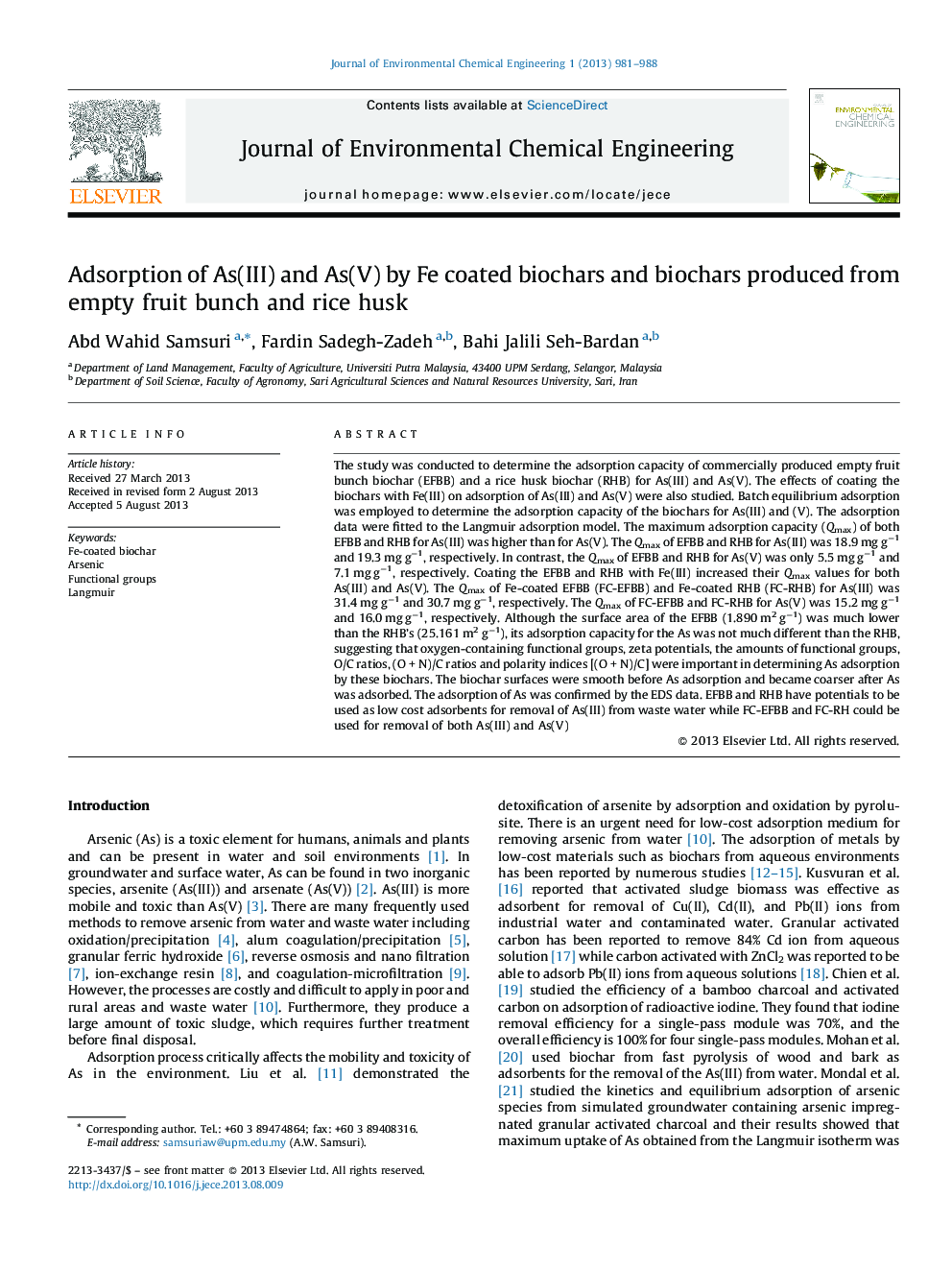| Article ID | Journal | Published Year | Pages | File Type |
|---|---|---|---|---|
| 222491 | Journal of Environmental Chemical Engineering | 2013 | 8 Pages |
The study was conducted to determine the adsorption capacity of commercially produced empty fruit bunch biochar (EFBB) and a rice husk biochar (RHB) for As(III) and As(V). The effects of coating the biochars with Fe(III) on adsorption of As(III) and As(V) were also studied. Batch equilibrium adsorption was employed to determine the adsorption capacity of the biochars for As(III) and (V). The adsorption data were fitted to the Langmuir adsorption model. The maximum adsorption capacity (Qmax) of both EFBB and RHB for As(III) was higher than for As(V). The Qmax of EFBB and RHB for As(III) was 18.9 mg g−1 and 19.3 mg g−1, respectively. In contrast, the Qmax of EFBB and RHB for As(V) was only 5.5 mg g−1 and 7.1 mg g−1, respectively. Coating the EFBB and RHB with Fe(III) increased their Qmax values for both As(III) and As(V). The Qmax of Fe-coated EFBB (FC-EFBB) and Fe-coated RHB (FC-RHB) for As(III) was 31.4 mg g−1 and 30.7 mg g−1, respectively. The Qmax of FC-EFBB and FC-RHB for As(V) was 15.2 mg g−1 and 16.0 mg g−1, respectively. Although the surface area of the EFBB (1.890 m2 g−1) was much lower than the RHB's (25.161 m2 g−1), its adsorption capacity for the As was not much different than the RHB, suggesting that oxygen-containing functional groups, zeta potentials, the amounts of functional groups, O/C ratios, (O + N)/C ratios and polarity indices [(O + N)/C] were important in determining As adsorption by these biochars. The biochar surfaces were smooth before As adsorption and became coarser after As was adsorbed. The adsorption of As was confirmed by the EDS data. EFBB and RHB have potentials to be used as low cost adsorbents for removal of As(III) from waste water while FC-EFBB and FC-RH could be used for removal of both As(III) and As(V)
